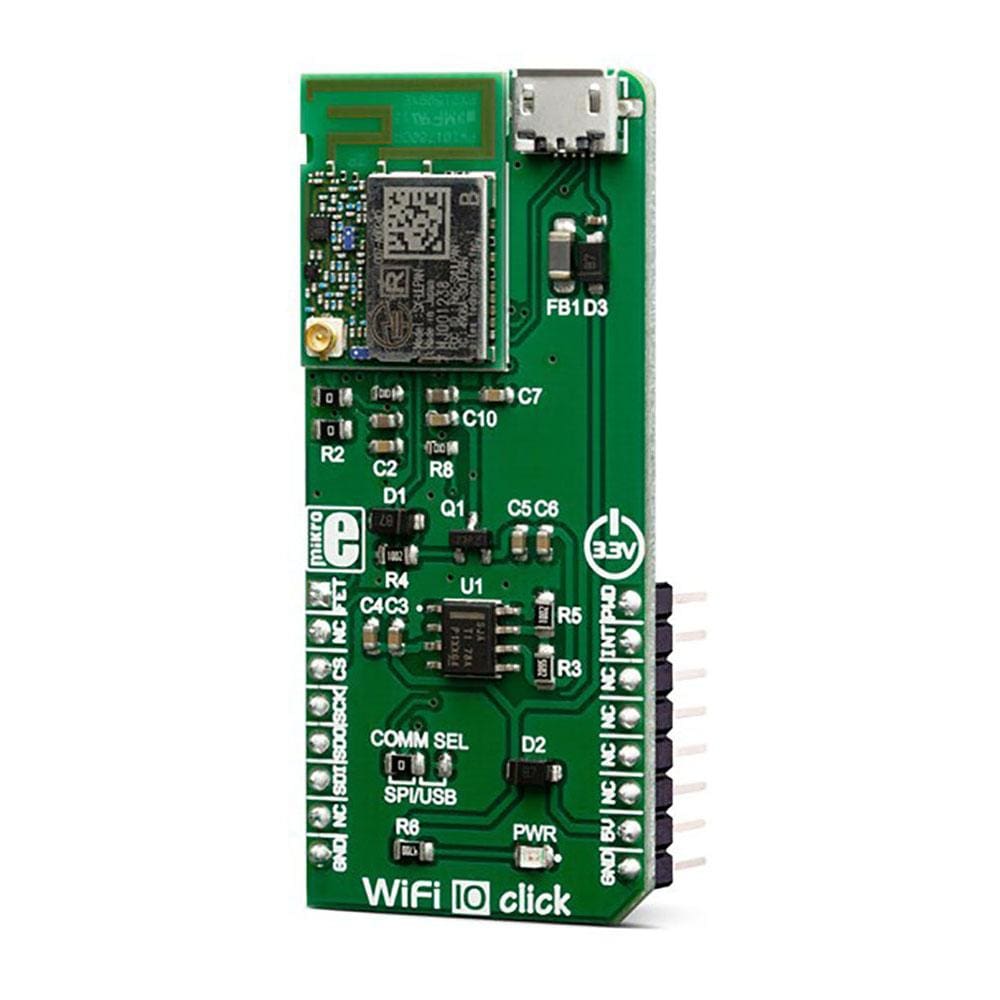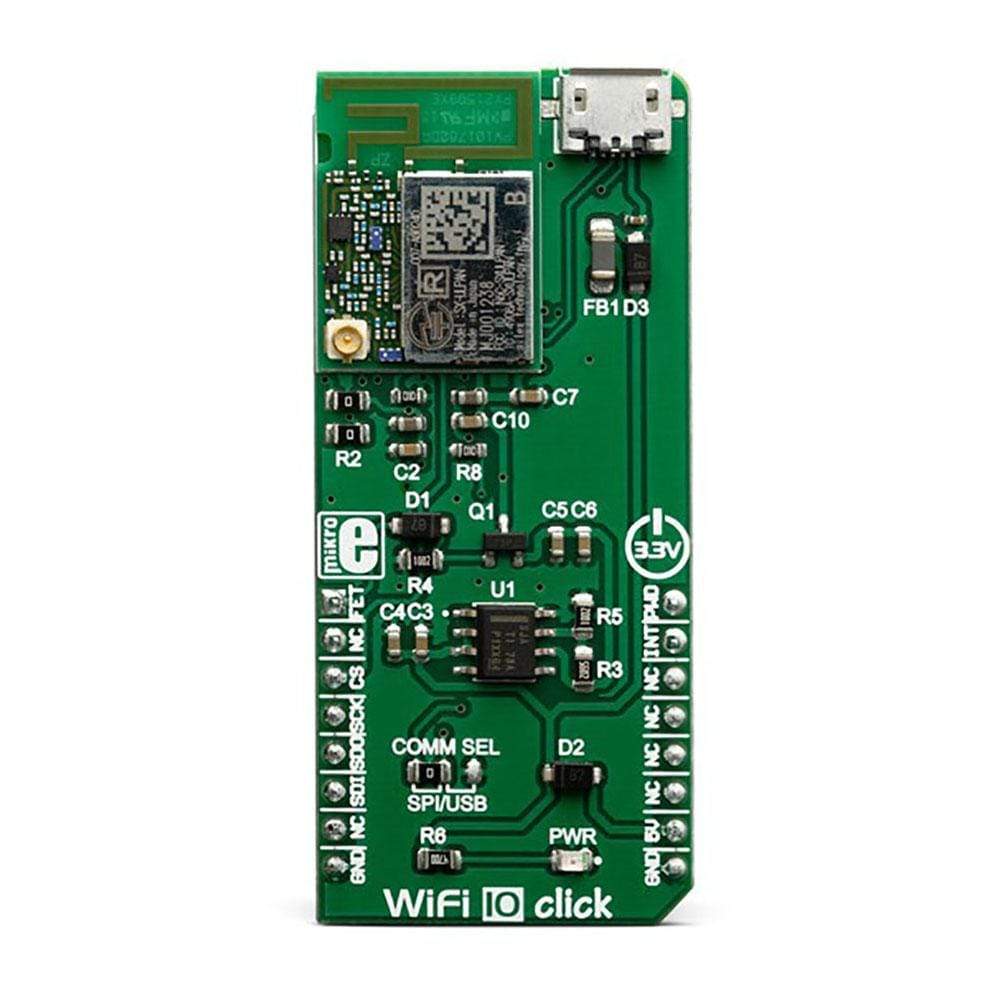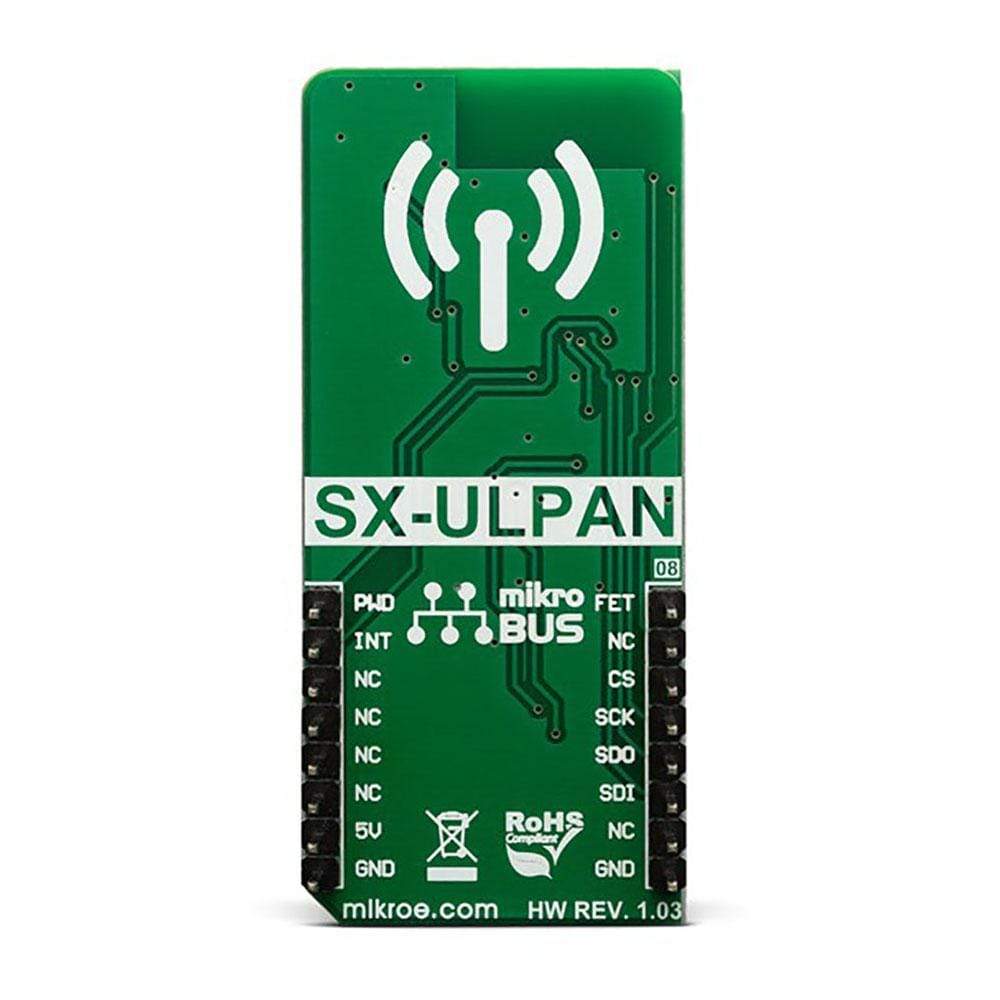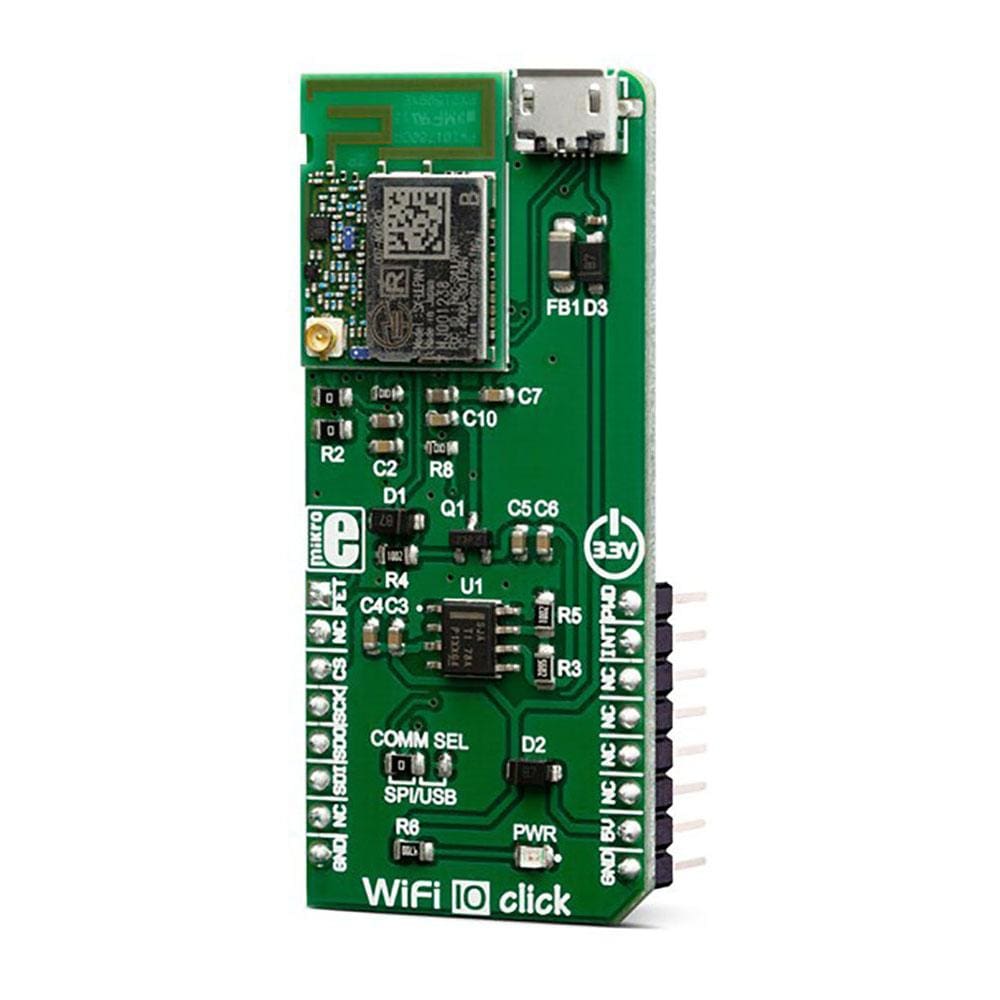
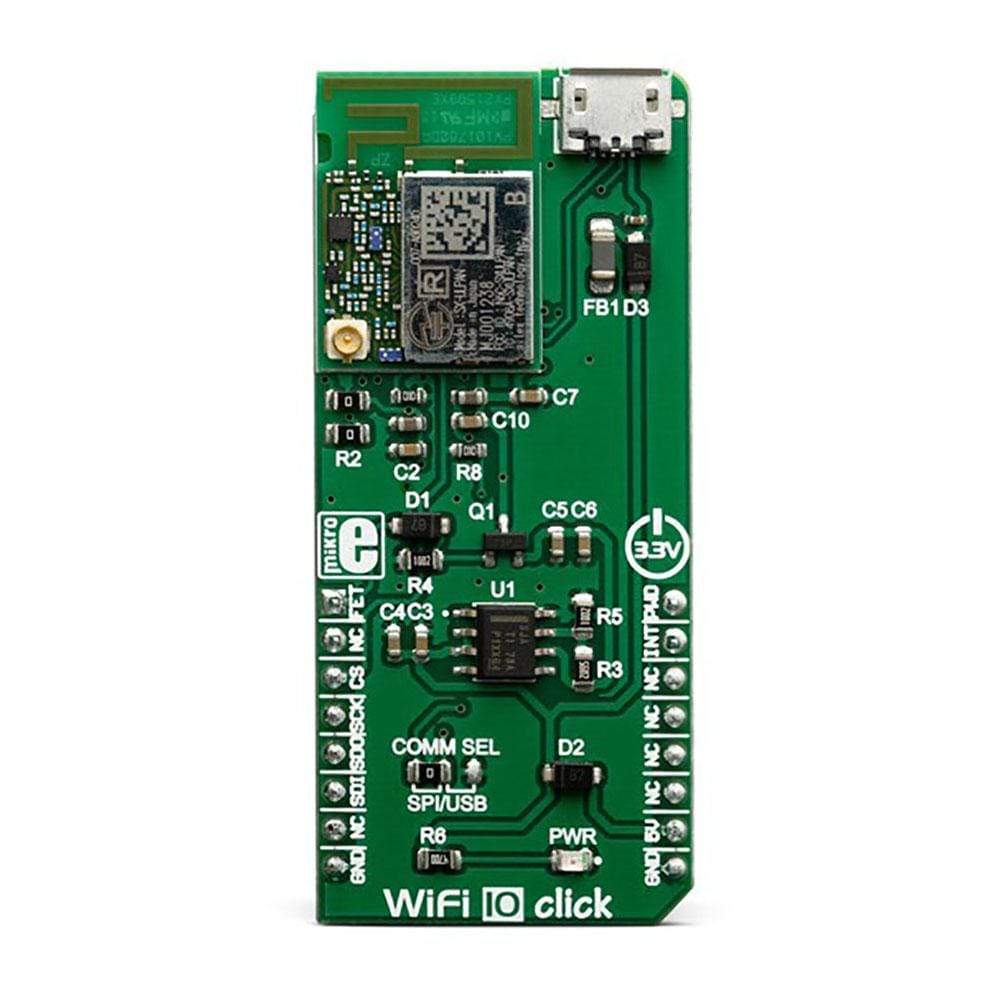
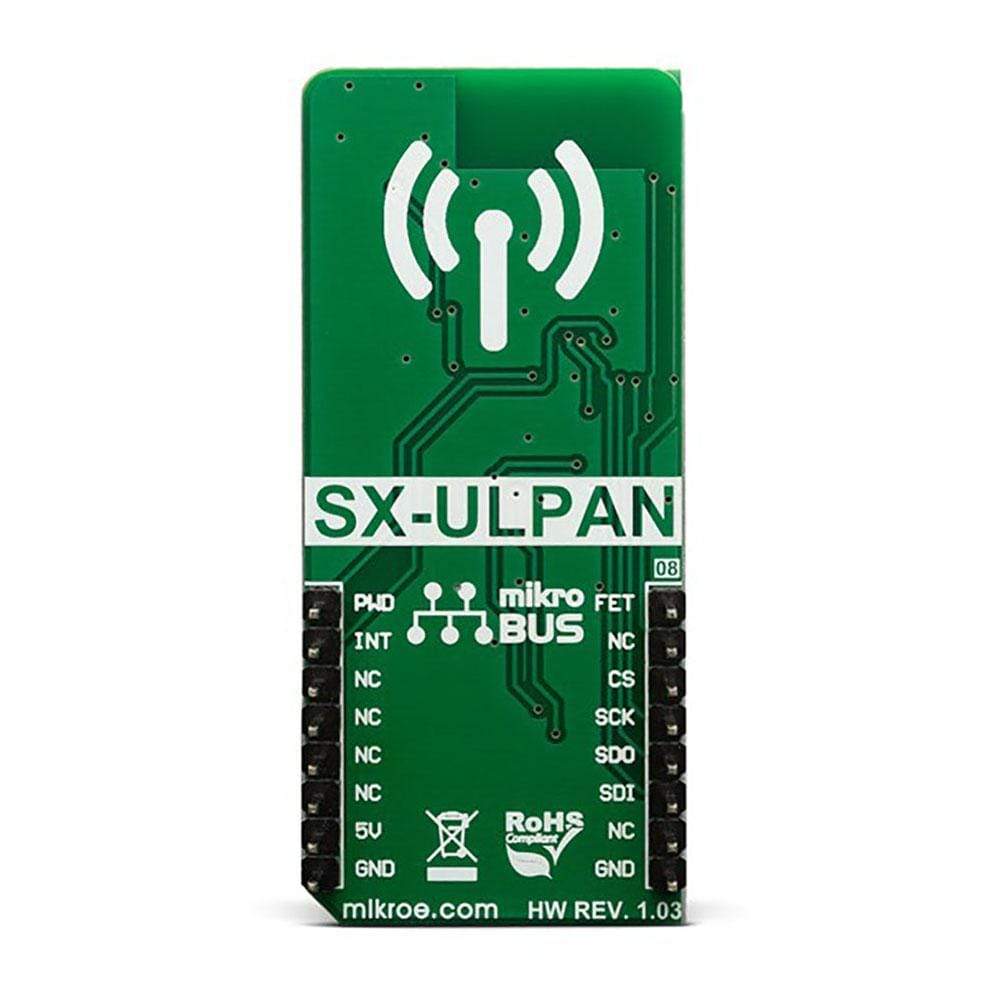
Key Features
Overview
The WiFi 10 Click Board™ offers ultra-low power wireless connectivity for any IoT application. It is based on the SX-ULPAN-SB-2401, an integrated wireless LAN module, compliant with the IEEE802.11a/b/g/n wireless networking protocols, at 2.4GHz. The ULPAN-SB-2401 module comes equipped with a PCB trace antenna, but it also offers a small Hirose U. FL connector allowing an external antenna to be used for improved range. The ULPAN-SB-2401 module supports IPv4, TCP, and UDP transfer protocols. It also supports WPS, WPA, and WPA2 security protocols, allowing a secure connection.
Downloads
Le module WiFi 10 Click Board™ offre une connectivité sans fil à très faible consommation d'énergie pour toute application IoT. Il est basé sur le SX-ULPAN-SB-2401, un module LAN sans fil intégré, conforme aux protocoles de réseau sans fil IEEE802.11a/b/g/n, à 2,4 GHz. Le module ULPAN-SB-2401 est équipé d'une antenne trace PCB, mais il offre également un petit connecteur Hirose U. FL permettant d'utiliser une antenne externe pour une meilleure portée. Le module ULPAN-SB-2401 prend en charge les protocoles de transfert IPv4, TCP et UDP. Il prend également en charge les protocoles de sécurité WPS, WPA et WPA2, permettant une connexion sécurisée.
| General Information | |
|---|---|
Part Number (SKU) |
MIKROE-3432
|
Manufacturer |
|
| Physical and Mechanical | |
Weight |
0.022 kg
|
| Other | |
Country of Origin |
|
HS Code Customs Tariff code
|
|
EAN |
8606018714827
|
Warranty |
|
Frequently Asked Questions
Have a Question?
Be the first to ask a question about this.

